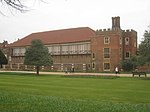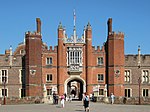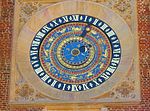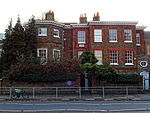Diana Fountain, Bushy Park

The Diana Fountain in Bushy Park, in the London Borough of Richmond upon Thames, is a seventeenth-century statue ensemble and water feature in an eighteenth-century setting with a surrounding pool and mile long tree lined vistas which honors the Roman Goddess Diana. Originally created for Somerset House in the 1630s, and remodelled about 1690, the fountain has stood since 1713 in Bushy Park, and now forms a large traffic island in Chestnut Avenue. It is the focal point of two major vistas designed by Sir Christopher Wren, including Chestnut Avenue which is the ceremonial landward approach to Hampton Court Palace. The traffic island is circular and contains a 400-foot (120 m) diameter pool surrounded by lawns, with the Diana statue on a tall base in the middle of the pool. The fountain was listed as Grade II in 1952 and in 2011 reclassified as Grade I.
Excerpt from the Wikipedia article Diana Fountain, Bushy Park (License: CC BY-SA 3.0, Authors, Images).Diana Fountain, Bushy Park
Chestnut Avenue, London
Geographical coordinates (GPS) Address Nearby Places Show on map
Geographical coordinates (GPS)
| Latitude | Longitude |
|---|---|
| N 51.40992 ° | E -0.33619 ° |
Address
Chestnut Avenue
KT8 9DD London (London Borough of Richmond upon Thames)
England, United Kingdom
Open on Google Maps










